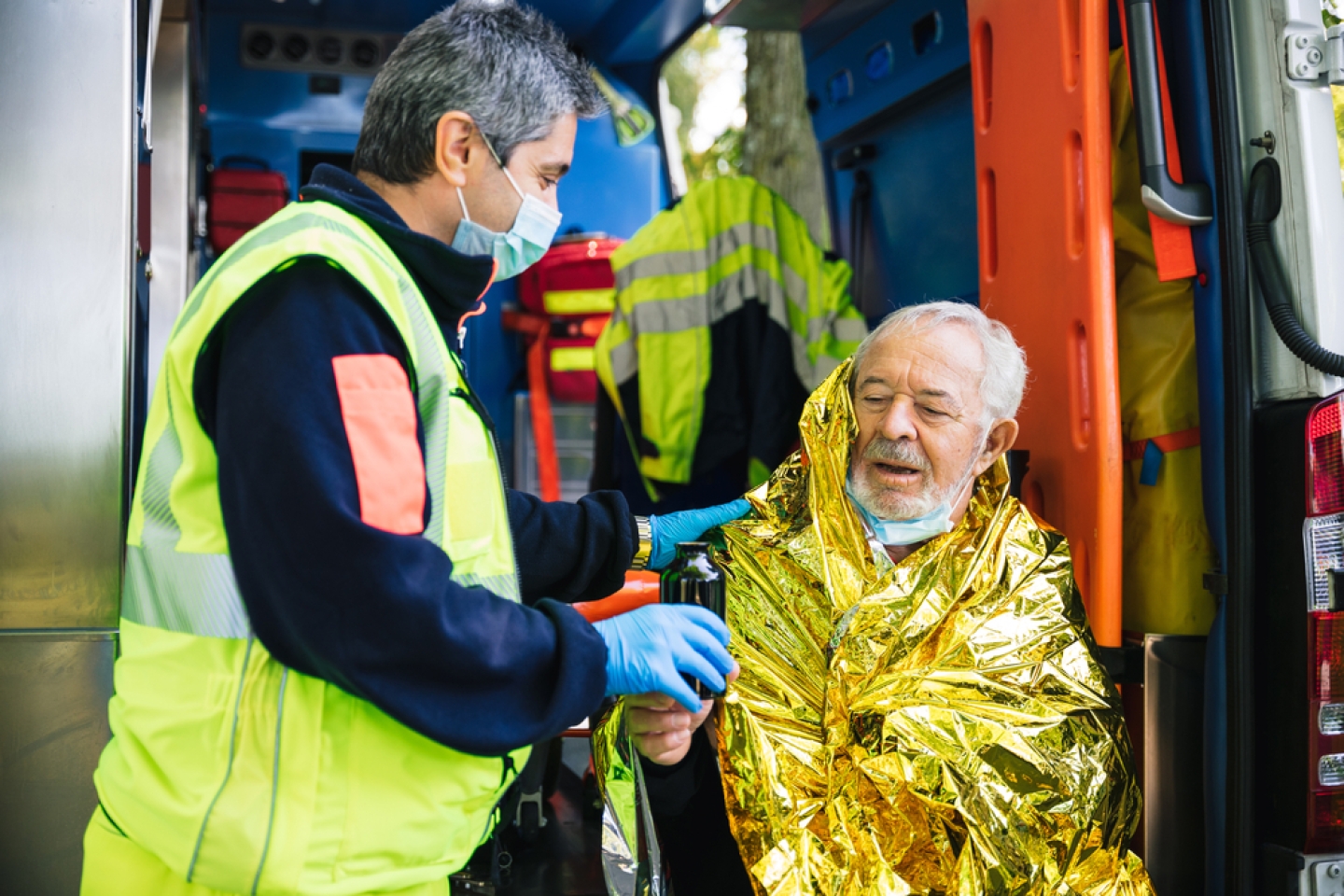
With the start of spring just weeks away, cold weather is still very much with us in the New York Metropolitan Area. And cold temperatures, especially when combined with wet weather conditions, can be hazardous—mostly to vulnerable people lacking the ability to protect themselves via clean, dry clothing or adequate shelter. Substance use may be part of that picture as well.
Outside the city, people who engage in “adventure” activities may fall prey to hypothermia as well.
Dr. Clark Owyang, an intensive care specialist who serves as an assistant professor in the Division of Pulmonary and Critical Care Medicine, as well as an assistant professor of clinical Emergency Medicine, treats patients suffering from cold-related injuries and hypothermia in the ICU and the Emergency Department (ED). February of this year has been particularly harsh, he notes.
Asked to define hypothermia, Dr. Owyang says it occurs when the body’s core temperature falls below 95° Fahrenheit (F).
Hypothermia usually affects the extremities first, soon spreading to the rest of the body. If allowed to progress, and if left untreated, it can affect every organ system in the body—most importantly, the nervous and cardiovascular systems.
Hypothermia can be mild, moderate or severe, depending on how far the body’s core temperature drops.
The American Academy of Family Physicians (AAFP) describes its stages as follows:
“The rewarming process can be complex,” Dr. Owyang says, “depending on the severity of a patient’s hypothermia.
“In the ED, we start by reversing the original cause. That means removing wet, dirty clothing and dealing with infections, if any,” he continues.
Then comes a “fork in the road.”
Non-severe cases are often treated via non-invasive methods, such as special warming blankets.
But more active, invasive techniques are required when patients with severe hypothermia end up in the ICU. To warm the entire body, warmed IV fluids are administered. Yet another method involves advanced machines that remove some of the patient’s blood, warm it outside the body and then re-deliver it. While the advanced, machine methods for rewarming can be aggressive, these techniques can literally saves lives in severe cases.
Frostbite is a freezing injury. Its symptoms include numbness, clumsiness and swelling, Dr. Owyang says. “If these get worse, seek medical attention immediately.”
However, he adds, “frostbite can progress, leading to complications. Without medical help, it may not be possible to reverse these, from lack of blood flow to permanent damage.
“If caused purely by exposure to cold, we’ll administer warm water baths to warm the tissues gradually,” he adds. “If a combination of cold and wet exposure is the cause, we immediately remove of all of the patient’s clothes and shoes and replace them with clean, dry ones before proceeding to next steps.”
The main one, Dr. Owyang says, is trench foot, also known as immersion foot—a non-freezing injury that occurs with prolonged exposure to wet, cold conditions above 32°F. Numbness and difficulty walking are typical symptoms. “Wearing wet boots for days can cause trench foot. If left untreated, it may lead to permanent tissue damage.”
Treating trench foot involves the following:
Adequate clothing and shelter are the critical variables for preventing all of the above. If substance use is an issue—especially combined with homelessness—the City offers abundant services that can help.
If you or someone you know is unhoused, check out the Department of of Homeless Services “Guide to Services” page.
As for help with substance use issues, including alcohol, The NYC Department of Health provides a wealth of services to New Yorkers suffering from addiction. And NYC Health & Hospitals offers numerous programs for New Yorkers with substance use issues.
Subtract shelter and substance use from the equation, and we’re left with clothing, Dr. Owyang says. “All of us should make sure to wear clothes that are layered, clean and dry—especially during the cold winter months.”
On Groundhog Day, Punxsutawney Phil saw his shadow, so spring will likely come late this year. Until it arrives, let’s all continue to bundle up.
Find a doctor at Weill Cornell Medicine here.